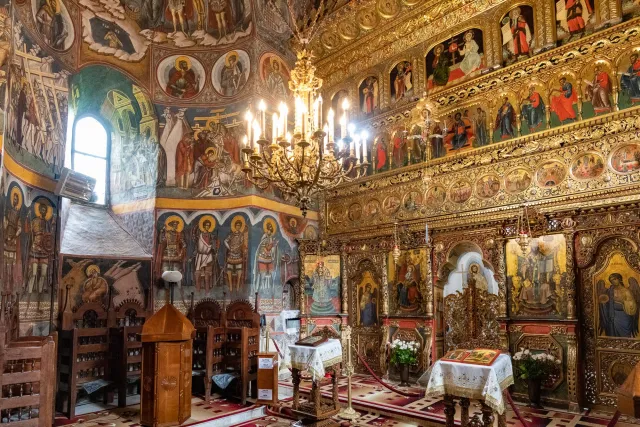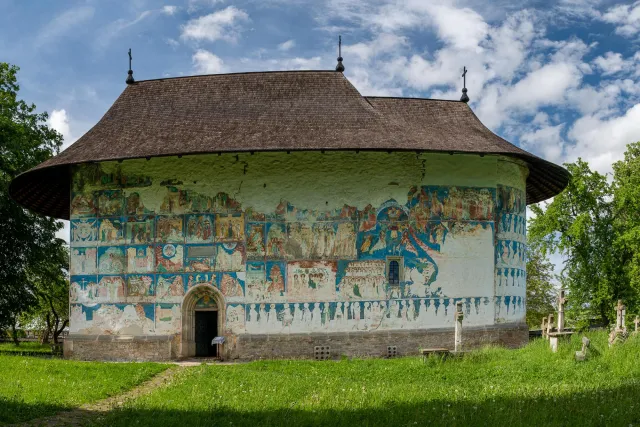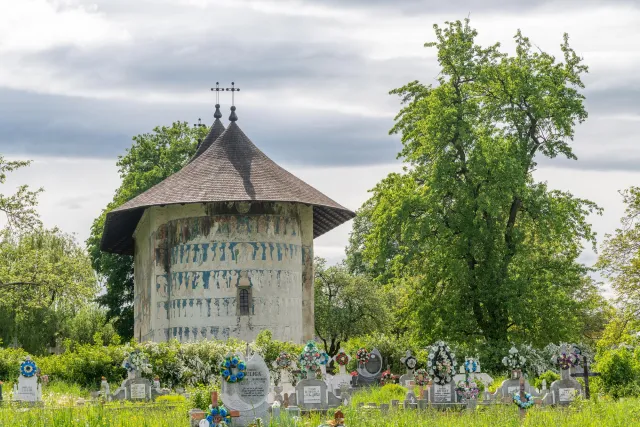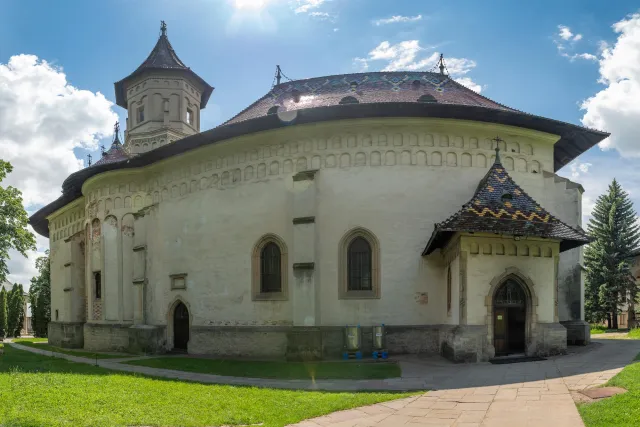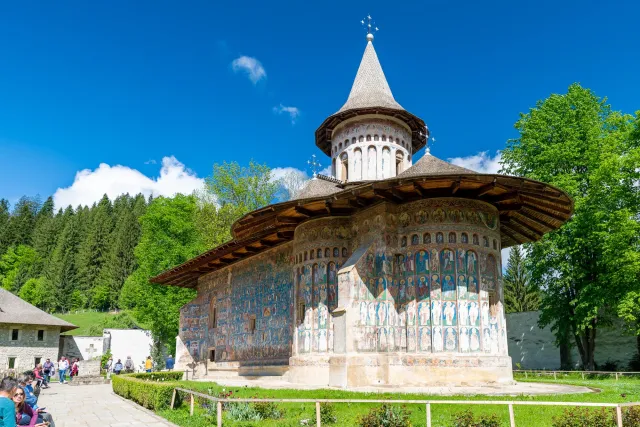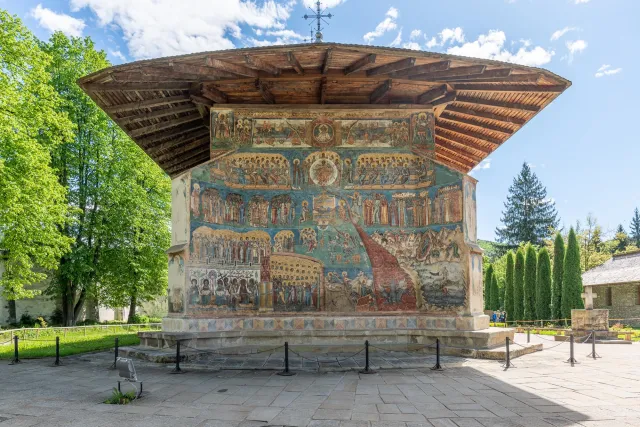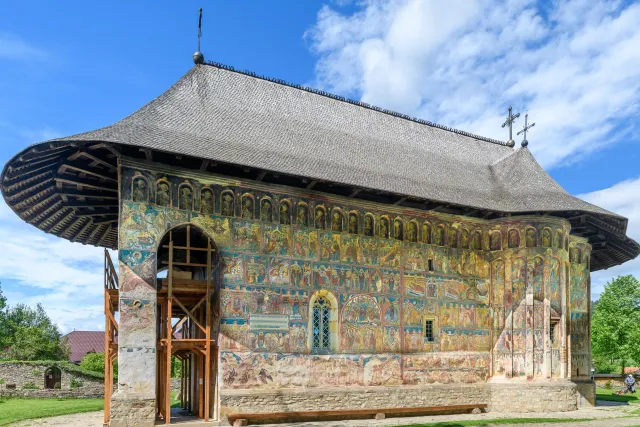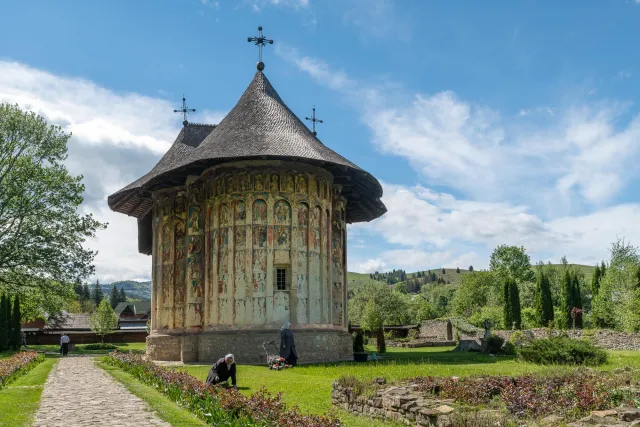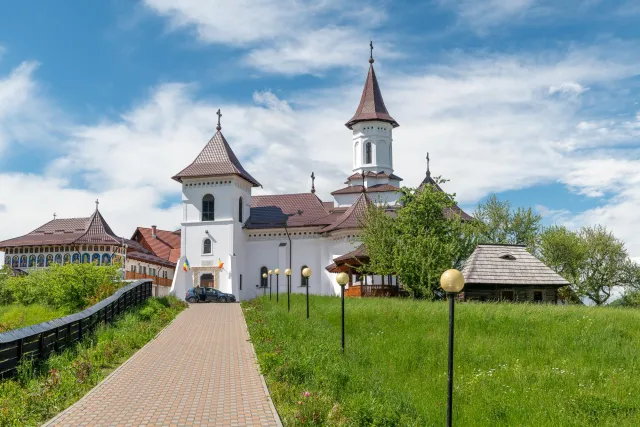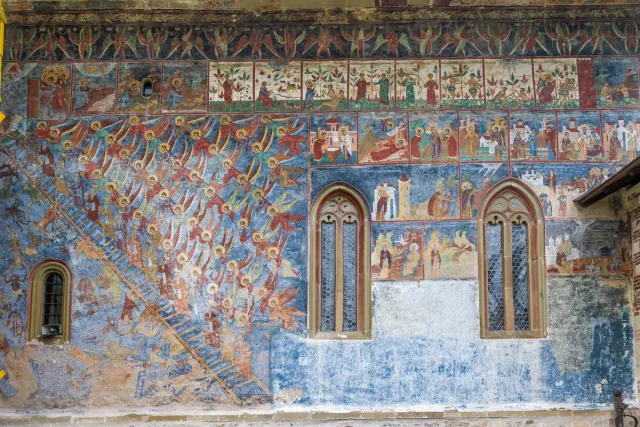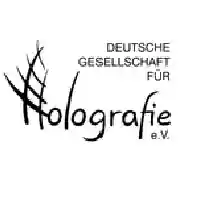The Principality of Moldova, founded in the 14th century, reached its cultural heyday in the 15th century under the province of Stephen the Great. Stephan cleverly managed to assert himself against Hungarian, Polish and Ottoman expansionist desires and he promised to build a religious building for every victory. His successes over Hungary, Poland and Turks finally led to the construction of over 40 churches and at the same time to the largest expansion of the Principality of Moldova in the areas of what is now Romania, Moldova (Republick Moldau) and Ukraine. We visited the Romanian Orthodox Moldavian monasteries in southern Bukovina in Romania and were very impressed by the paintings on the outer walls, which convey scenes and parables from the Bible, in order to reach those who are unfamiliar with reading and writing.
The architecture of the monastery churches, which are often surrounded by protective walls, and the iconic fresco paintings show Byzantine influences. The architectural style is shaped by the Gothic. We found the depiction of the sky ladder in Sucevita Monastery, which divides the field of the flying angels from the falling people and demons, particularly impressive. This monastery was in a restoration phase, so that we could not create a suitable building image. The starting point for visits to the monasteries is Gura Humorului.
Below we show pictures of the following monasteries:
- Moldovița Monastery - a Romanian Orthodox women's monastery in the Suceava district in the territory of the Vatra Moldoviței municipality,
- Arbore Monastery - near the town of Solca on the territory of the municipality of Arbore,
- Suceava Monastery - Sfântul Ioan cel Nou is located in Suceava,
- Voronet Monastery - in the Voroneț district of the small town of Gura Humorului in the Suceava district,
- Kloser Humor - a Romanian Orthodox women's monastery about 5 km north of the city of Gura Humorului,
- Sucevița Monastery - in the Sucevița parish in the Suceava district.



